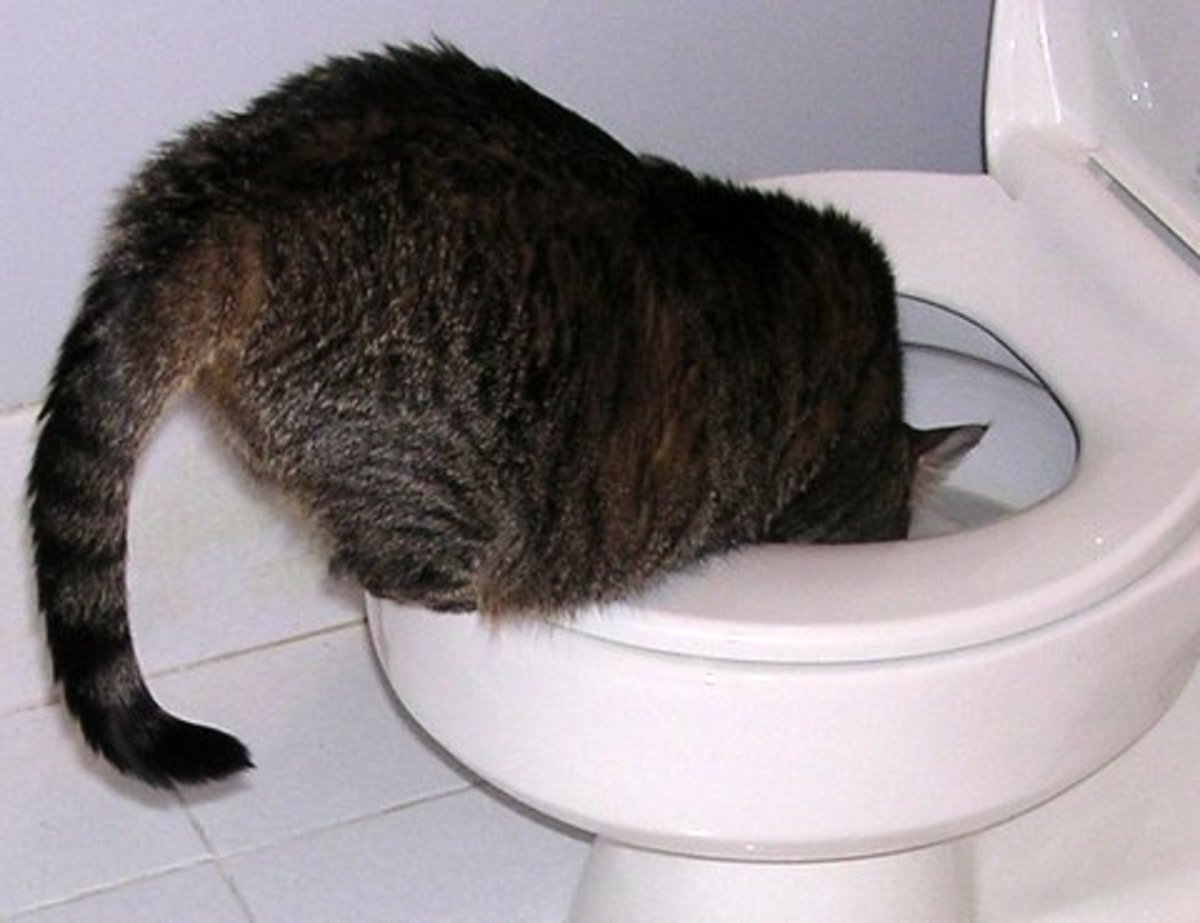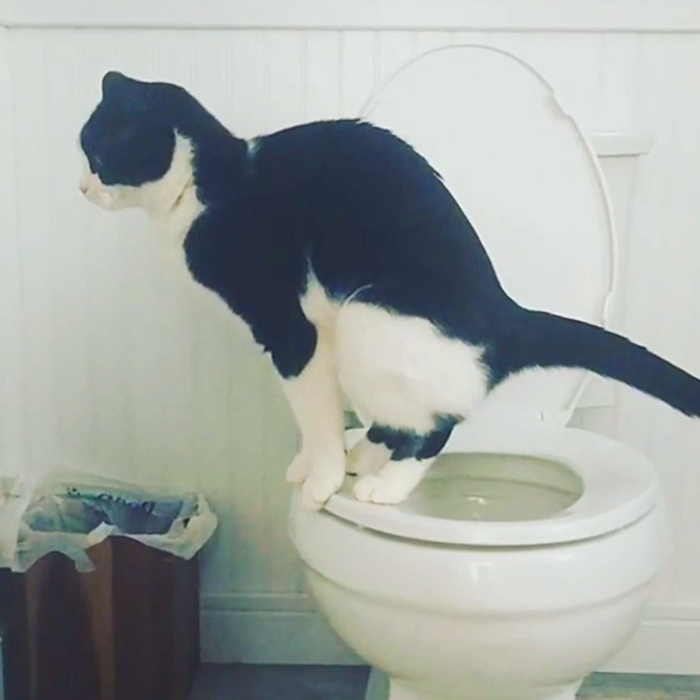Crucial Points Regarding Flushing Animal Waste Down the Toilet
Crucial Points Regarding Flushing Animal Waste Down the Toilet
Blog Article
How do you feel about Should you flush animal waste down the toilet?

When it involves throwing away waste, especially animal waste, many people commonly resort to the practical alternative of flushing it down the toilet. Nonetheless, this apparently very easy remedy can have significant effects for the atmosphere and public health. In this post, we'll explore why flushing pet waste down the commode is a poor idea and offer different approaches for appropriate disposal.
Introduction
Proper garbage disposal is vital for preserving environmental sustainability and public health. While it might seem safe to flush animal waste down the toilet, it can cause various concerns, both for the environment and human wellness.
Dangers of flushing animal waste
Environmental influence
Purging animal waste presents unsafe microorganisms and microorganisms right into waterways, which can adversely influence water communities. These virus can pollute water resources and damage marine life, disrupting fragile ecological communities.
Public health problems
Pet waste includes hazardous bacteria such as E. coli and Salmonella, which can present significant health and wellness threats to humans. Purging pet waste down the toilet can pollute water products, leading to the spread of diseases and infections.
Alternatives to flushing
Rather than purging pet waste down the toilet, there are numerous alternate disposal methods that are much more environmentally friendly and hygienic.
Composting
Composting animal waste is an environment-friendly method to take care of it. By composting, organic matter is broken down into nutrient-rich dirt, which can be used to feed yards and plants.
Garbage dump disposal
Taking care of pet waste in a garbage dump is another alternative. While not as eco-friendly as composting, it is a safer choice to flushing, as it prevents the contamination of water resources.
Animal garbage disposal systems
There are specific animal garbage disposal systems available that securely and hygienically deal with pet waste. These systems read more usually use enzymes to break down waste and get rid of smells.
Steps to appropriate pet garbage disposal
To ensure appropriate disposal of pet waste, follow these steps:
Scooping and nabbing waste
Consistently scoop and bag animal waste utilizing naturally degradable bags. This stops waste from infecting the setting.
Using assigned waste containers
Dispose of bagged pet waste in marked waste containers, such as garden compost containers or land fill containers. Prevent flushing it down the bathroom whatsoever costs.
Cleaning can and pet locations on a regular basis
On a regular basis tidy litter boxes and family pet locations to avoid the accumulation of waste and microorganisms. Usage pet-safe cleansing items to preserve health.
Advantages of proper disposal techniques
Adopting correct disposal approaches for pet waste provides several benefits:
Lowered environmental pollution
Correct disposal methods decrease the danger of environmental pollution, shielding waterways and ecological communities from contamination
Minimized threat of water contamination.
By staying clear of flushing pet waste down the toilet, the danger of water contamination is considerably lowered, protecting public health.
Improved hygiene and hygiene
Correct disposal approaches advertise far better hygiene and health, developing a more secure setting for both people and animals.
Conclusion
Finally, flushing animal waste down the bathroom is unsafe to the setting and public health. By embracing alternate disposal methods and adhering to proper waste management methods, we can decrease the adverse effect of animal waste and add to a cleaner, healthier earth.
What To Do With Dog Poo – The Do's And Don'ts Of Disposing Of Faeces
Dog poo bins
Some councils provide dedicated dog waste bins in popular dog-walking areas that can take dog poo that has been bagged but you can legally dispose of dog waste in any public litter bin, as long as it is securely bagged. This also applies to your wheelie bin at home.
Do not flush
Water companies do not recommend flushing dog faeces down the toilet because certain parasites can survive the water processing treatment and are potentially harmful to humans. You should also never consider flushing dog poo that has been bagged down the toilet as the bags will not break down and instead create severe blockages in the sewage system.
In the woods
The Forestry Commission promotes a ‘stick and flick’ method for dealing with waste in the woods. This means finding a stick and using it to flick any poo from off the path so that it is out of the way of other walkers. You could also bury it as long as it is not in an area where there might be livestock.
Livestock
Parasites found in dog poo can be transmitted to livestock if they inadvertently eat infected faeces that has been left on grazing land. This could result in the death of sheep or abortion in cattle so you should always make sure you pick up your dog’s waste in fields where livestock could be present.

On a regular basis tidy litter boxes and family pet locations to avoid the accumulation of waste and microorganisms. Usage pet-safe cleansing items to preserve health.
Advantages of proper disposal techniques
Adopting correct disposal approaches for pet waste provides several benefits:
Lowered environmental pollution
Correct disposal methods decrease the danger of environmental pollution, shielding waterways and ecological communities from contamination
Minimized threat of water contamination.
By staying clear of flushing pet waste down the toilet, the danger of water contamination is considerably lowered, protecting public health.
Improved hygiene and hygiene
Correct disposal approaches advertise far better hygiene and health, developing a more secure setting for both people and animals.
Conclusion
Finally, flushing animal waste down the bathroom is unsafe to the setting and public health. By embracing alternate disposal methods and adhering to proper waste management methods, we can decrease the adverse effect of animal waste and add to a cleaner, healthier earth.
What To Do With Dog Poo – The Do's And Don'ts Of Disposing Of Faeces
Dog poo bins
Some councils provide dedicated dog waste bins in popular dog-walking areas that can take dog poo that has been bagged but you can legally dispose of dog waste in any public litter bin, as long as it is securely bagged. This also applies to your wheelie bin at home.
Do not flush
Water companies do not recommend flushing dog faeces down the toilet because certain parasites can survive the water processing treatment and are potentially harmful to humans. You should also never consider flushing dog poo that has been bagged down the toilet as the bags will not break down and instead create severe blockages in the sewage system.
In the woods
The Forestry Commission promotes a ‘stick and flick’ method for dealing with waste in the woods. This means finding a stick and using it to flick any poo from off the path so that it is out of the way of other walkers. You could also bury it as long as it is not in an area where there might be livestock.
Livestock
Parasites found in dog poo can be transmitted to livestock if they inadvertently eat infected faeces that has been left on grazing land. This could result in the death of sheep or abortion in cattle so you should always make sure you pick up your dog’s waste in fields where livestock could be present.

I discovered that article on Should you flush animal waste down the toilet when doing a lookup on the search engines. So long as you liked our post please consider to share it. Thanks a bunch for your time. Come back soon.
Book Report this page